 W
WThe Anglo-French War was a major medieval conflict which pitted the Kingdom of France against the Kingdom of England and various other states. It was fought in an attempt to curb the rising power of King Philip II of France and regain the Angevin continental possessions King John of England lost to him a decade earlier. It is widely regarded as the very first anti-french coalition war and came to an end at the decisive Battle of Bouvines, where Philip defeated England and its allies.
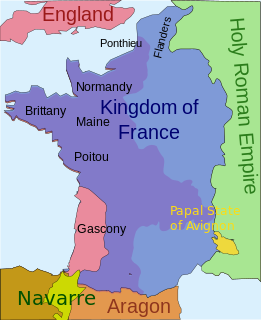 W
WThe Anglo-French War was a conflict between 1294–98 and 1300–03 revolved around Gascony. The Treaty of Paris (1303) ended the conflict.
 W
WThe Anglo-Spanish War (1585–1604) was an intermittent conflict between the kingdoms of Spain and England that was never formally declared. The war was punctuated by widely separated battles, and began with England's military expedition in 1585 to what was then the Spanish Netherlands under the command of Robert Dudley, Earl of Leicester, in support of the resistance of the States General to Spanish Habsburg rule.
 W
WThe Anglo–Spanish War was a war fought by Spain against the Kingdom of England and the United Provinces from 1625 to 1630. The conflict formed part of the Eighty Years' War and the Thirty Years' War.
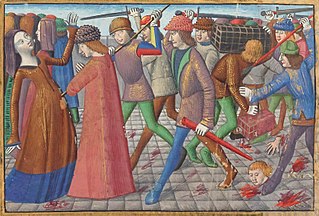 W
WThe Armagnac–Burgundian Civil War was a conflict between two cadet branches of the French royal family — the House of Orléans and the House of Burgundy from 1407 to 1435. It began during a lull in the Hundred Years' War against the English and overlapped with the Western Schism of the papacy.
 W
WThe Barons' Crusade, also called the Crusade of 1239 or the Crusade of Theobald I of Navarre, was in territorial terms the most successful crusade since the First Crusade. Called by Pope Gregory IX, the Barons' Crusade broadly spanned from 1234-1241 and embodied the highest point of papal endeavor "to make crusading a universal Christian undertaking." Gregory called for a crusade in France, England, and Hungary with different degrees of success. Although the crusaders did not achieve any glorious military victories, they used diplomacy to successfully play the two warring factions of the Muslim Ayyubid dynasty against one another for even more concessions than Frederick II gained during the more well-known Sixth Crusade. For a few years, the Barons' Crusade returned the Kingdom of Jerusalem to its largest size since 1187.
 W
WThe 1639 and 1640 Bishops' Wars were the first of the conflicts known collectively as the 1638 to 1651 Wars of the Three Kingdoms, which took place in Scotland, England and Ireland. Others include the Irish Confederate Wars, the First, Second and Third English Civil Wars, and the Cromwellian conquest of Ireland.
 W
WThe Capetian–Plantagenet rivalry was a series of conflicts and disputes that covered a period of 100 years (1159–1259), during which the House of Capet, rulers of the Kingdom of France, fought against the House of Plantagenet, rulers of the Kingdom of England in order to suppress the growing power of the Plantagenet-controlled Angevin Empire. Some historians refer to that series of events as the "First Hundred Years War".
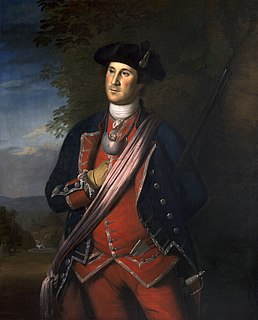 W
WColonial American military history is the military record of the Thirteen Colonies from their founding to the American Revolution in 1775.
 W
WThe 1383–1385 Portuguese interregnum was a civil war in Portuguese history during which no crowned king of Portugal reigned. The interregnum began when King Ferdinand I died without a male heir and ended when King John I was crowned in 1385 after his victory during the Battle of Aljubarrota.
 W
WThe Dutch–Portuguese War was an armed conflict involving Dutch forces, in the form of the Dutch East India Company and the Dutch West India Company, against the Portuguese Empire. Beginning in 1602, the conflict primarily involved the Dutch companies invading Portuguese colonies in the Americas, Africa, India and the Far East. The war can be thought of as an extension of the Eighty Years' War being fought in Europe at the time between Spain and the Netherlands, as Portugal was in a dynastic union with the Spanish Crown after the War of the Portuguese Succession, for most of the conflict. However, the conflict had little to do with the war in Europe and served mainly as a way for the Dutch to gain an overseas empire and control trade at the cost of the Portuguese. English forces also assisted the Dutch at certain points in the war. Because of the commodity at the center of the conflict, this war would be nicknamed the Spice War.
 W
WThe English Civil War (1642–1651) was a series of civil wars and political machinations between Parliamentarians ("Roundheads") and Royalists ("Cavaliers"), mainly over the manner of England's governance and issues of religious freedom. It was part of the wider Wars of the Three Kingdoms. The first (1642–1646) and second (1648–1649) wars pitted the supporters of King Charles I against the supporters of the Long Parliament, while the third (1649–1651) saw fighting between supporters of King Charles II and supporters of the Rump Parliament. The wars also involved the Scottish Covenanters and Irish Confederates. The war ended with Parliamentarian victory at the Battle of Worcester on 3 September 1651.
 W
WThe English expedition to Portugal also known as the British Brigade in Portugal was a brigade raised during the reign of King Charles II for service in Portugal during the ongoing Portuguese Restoration War against Spain in August 1662. The brigade, many of which were veterans of the English Civil Wars and the Dutch Revolt, then fought in all the major battles and skirmishes under the command of Frederick Schomberg, 1st Duke of Schomberg and remained in Portugal until the end of the war being subsequently disbanded by mid 1668. The brigade under Schomberg's leadership, proved a decisive factor in winning back Portugal's independence.
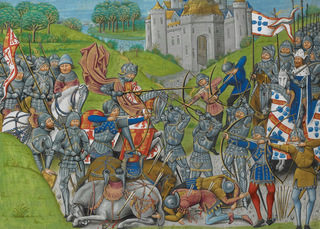 W
WThe Fernandine Wars were a series of three conflicts between the Kingdom of Portugal under King Ferdinand I and the Crown of Castile under King Henry II. They were fought over Ferdinand's claim to the Castilian succession after the death of King Peter of Castile in 1369.
 W
WThe Franco-Dutch War, often simply called the Dutch War, fought from 1672 to 1678, was a major conflict which pitted France against the Dutch Republic. It also involved many other European states, including the Holy Roman Empire, Spain, England, Sweden, Brandenburg-Prussia and Denmark-Norway. It was the first of the major European wars that marked the reign of Louis XIV of France.
 W
WThe Great Northern War (1700–1721) was a conflict in which a coalition led by the Tsardom of Russia successfully contested the supremacy of the Swedish Empire in Northern, Central and Eastern Europe. The initial leaders of the anti-Swedish alliance were Peter I of Russia, Frederick IV of Denmark–Norway and Augustus II the Strong of Saxony–Poland–Lithuania. Frederick IV and Augustus II were defeated by Sweden, under Charles XII, and forced out of the alliance in 1700 and 1706 respectively, but rejoined it in 1709 after the defeat of Charles XII at the Battle of Poltava. George I of Great Britain and the Electorate of Hanover joined the coalition in 1714 for Hanover and in 1717 for Britain, and Frederick William I of Brandenburg-Prussia joined it in 1715.
 W
WThe Italian War of 1521–1526, sometimes known as the Four Years' War, was a part of the Italian Wars. The war pitted Francis I of France and the Republic of Venice against the Holy Roman Emperor Charles V, Henry VIII of England, and the Papal States. The conflict arose from animosity over the election of Charles as Emperor in 1519–20 and from Pope Leo X's need to ally with Charles against Martin Luther.
 W
WThe Italian War of 1542–1546 was a conflict late in the Italian Wars, pitting Francis I of France and Suleiman I of the Ottoman Empire against the Holy Roman Emperor Charles V and Henry VIII of England. The course of the war saw extensive fighting in Italy, France, and the Low Countries, as well as attempted invasions of Spain and England. The conflict was inconclusive and ruinously expensive for the major participants.
 W
WThe Italian War of 1551–1559, sometimes known as the Habsburg–Valois War and the Last Italian War, began when Henry II of France declared war against Holy Roman Emperor Charles V with the intent of recapturing Italy and ensuring French, rather than Habsburg, domination of European affairs. Historians have emphasized the importance of gunpowder technology, new styles of fortification to resist cannon fire, and the increased professionalization of the soldiers.
 W
WThe Komenda Wars were a series of wars from 1694 until 1700 largely between the Dutch West India Company and the British Royal African Company in the Eguafo Kingdom in the present day state of Ghana, over trade rights. The Dutch were trying to keep the British out of the region to maintain a trade monopoly while the British were attempting to re-establish a fort in the city of Komenda. The fighting included forces of the Dutch West India Company, the Royal African Company, the Eguafo Kingdom, a prince of the kingdom attempting to rise to the throne, the forces of a powerful merchant named John Cabess, other Akan tribes and kingdoms like Twifo and Denkyira. There were four separate periods of warfare, including a civil war in the Eguafo Kingdom, and the wars ended with the British placing Takyi Kuma into power in Eguafo. Because of the rapidly shifting alliances between European and African powers, historian John Thornton has found that "there is no finer example of [the] complicated combination of European rivalry merging with African rivalry than the Komenda Wars."
 W
WThe War of the League of Cambrai, sometimes known as the War of the Holy League and by several other names, was a major conflict in the Italian Wars of 1494–1559. The main participants of the war, fought from 1508 to 1516, were France, the Papal States, and the Republic of Venice, joined at various times by nearly every significant power in Western Europe, including Spain, the Holy Roman Empire, England, the Duchy of Milan, the Republic of Florence, the Duchy of Ferrara, and Swiss mercenaries.
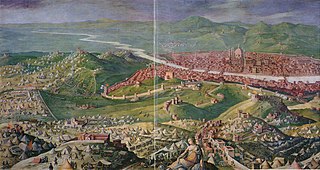 W
WThe War of the League of Cognac (1526–30) was fought between the Habsburg dominions of Charles V—primarily the Holy Roman Empire and Spain—and the League of Cognac, an alliance including the Kingdom of France, Pope Clement VII, the Republic of Venice, the Kingdom of England, the Duchy of Milan, and the Republic of Florence.
 W
WThis article is a list of the participants, both civilian and military, of the Nine Years' War in Ireland. The war was fought in the late 16th and early 17th century and was a conflict between a coalition of Irish lords and their Spanish allies against the English and their authorities in Ireland.In order to be listed here an individual must have a historical record of their conduct, position or any role they played in the war during the years 1593-1603.
 W
WThe Marian civil war in Scotland (1568–1573) was a period of conflict which followed the abdication of Mary, Queen of Scots, and her escape from Lochleven Castle in May 1568. Those who ruled in the name of her infant son James VI fought against the supporters of the Queen, who was exiled in England. Edinburgh Castle, which was garrisoned in her name, became the focus of the conflict and surrendered only after an English intervention in May 1573. The conflict in 1570 was called an "intestine war in the bowels of this commonwealth", and the period was called soon after an "intestine war driven by questions against authority."
 W
WThe Nine Years' War (1688–1697), often called the War of the Grand Alliance or the War of the League of Augsburg, was a conflict between France and a European coalition which mainly included the Holy Roman Empire, the Dutch Republic, England, Spain, Savoy and Portugal. It was fought in Europe and the surrounding seas, in North America, and in India. It is sometimes considered the first global war. The conflict encompassed the Williamite war in Ireland and Jacobite risings in Scotland, where William III and James II struggled for control of England and Ireland, and a campaign in colonial North America between French and English settlers and their respective Indigenous allies, today called King William's War by Americans.
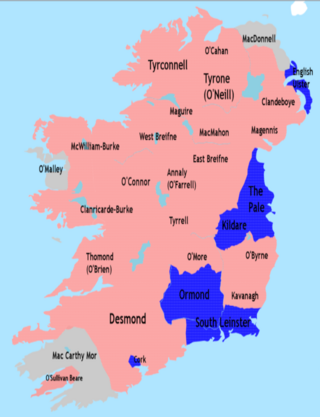 W
WThe Nine Years' War, sometimes called Tyrone's Rebellion, took place in Ireland from 1593 to 1603. It was fought between an Irish alliance—led mainly by Hugh O'Neill of Tyrone and Hugh Roe O'Donnell of Tyrconnell—against English rule in Ireland, and was a response to the then-ongoing Tudor conquest of Ireland. The war was fought in all parts of the country, but mainly in the northern province of Ulster. The Irish alliance won some important early victories, such as the Battle of Clontibret (1595) and the Battle of the Yellow Ford (1598), but the English won a decisive victory against the alliance and their Spanish allies in the Siege of Kinsale (1601–02). The war ended with the Treaty of Mellifont (1603). Many of the defeated northern lords left Ireland to seek support for a new uprising in the Flight of the Earls (1607), never to return. This marked the end of Gaelic Ireland and led to the Plantation of Ulster.
 W
WThe Palatinate campaign, or the Spanish conquest of the Palatinate took place from 1620 to 1622, the Palatinate Phase of the Thirty Years' War.
 W
WThe Portuguese Restoration War was the war between Portugal and Spain that began with the Portuguese revolution of 1640 and ended with the Treaty of Lisbon in 1668, bringing a formal end to the Iberian Union. The period from 1640 to 1668 was marked by periodic skirmishes between Portugal and Spain, as well as short episodes of more serious warfare, much of it occasioned by Spanish and Portuguese entanglements with non-Iberian powers. Spain was involved in the Thirty Years' War until 1648 and the Franco–Spanish War until 1659, while Portugal was involved in the Dutch–Portuguese War until 1663.
 W
WThe War of the Portuguese Succession, a result of the extinction of the Portuguese royal line after the Battle of Alcácer Quibir and the ensuing Portuguese succession crisis of 1580, was fought from 1580 to 1583 between the two main claimants to the Portuguese throne: António, Prior of Crato, proclaimed in several towns as King of Portugal, and his first cousin Philip II of Spain, who eventually succeeded in claiming the crown, reigning as Philip I of Portugal.
 W
WQueen Anne's War (1702–1713) was the second in a series of French and Indian Wars fought in England's Thirteen American Colonies during the reign of Anne, Queen of Great Britain. In Europe, it is generally viewed as the American theater of the War of the Spanish Succession; in the Americas, it is more commonly viewed as a standalone conflict. It is also known as the Third Indian War or as the Second Intercolonial War in France.
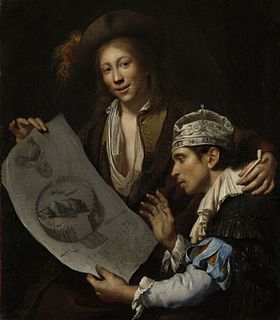 W
WIn Dutch history, the year 1672 is referred to as the Rampjaar. In May 1672, following the outbreak of the Franco-Dutch War and its peripheral conflict the Third Anglo-Dutch War, the Dutch Republic was invaded by France, supported by Münster and Cologne, with such success it was nearly overrun. While at the same time, it faced the threat of an English naval blockade in support of the French endeavor. This attempt was however abandoned following the Battle of Solebay, thanks to the sagacious leadership of Lieutenant-Admiral Michiel de Ruyter. A famous Dutch saying coined that year describes the Dutch people as redeloos, its government as radeloos, and the country as reddeloos: senseless, desperate, and irrecoverable, respectively. Fed up with reduced military spending, the cities of the remaining coastal provinces of Holland, Zealand and Frisia underwent a political transition: the city governments were taken over by Orangists, opposed to the republican regime of the Grand Pensionary Johan de Witt, soon ending the First Stadtholderless Period.
 W
WThe Rough Wooing was a war between Scotland and England. Following its break with the Roman Catholic Church, England attacked Scotland, partly to destroy the Auld Alliance and prevent Scotland being used as a springboard for future invasion by France, partly to weaken Scotland, and partly to force Scotland to agree to a marriage alliance between Mary, Queen of Scots, and the English heir apparent Edward, son of King Henry VIII,. An invasion of France was also contemplated. Henry declared war in an attempt to force the Scots to agree to a marriage between Edward, who was six years old at the start of the war, and the infant queen, thereby creating a new alliance between Scotland and England. Upon Edward's accession to the throne in 1547 at the age of nine, the war continued for a time under the direction of the Duke of Somerset, before Somerset's removal from power in 1549 and replacement by the Duke of Northumberland, who wished for a less costly foreign policy than his predecessor. It was the last major conflict between Scotland and England before the Union of the Crowns in 1603, excepting perhaps the English intervention at the Siege of Leith in 1560, and was part of the Anglo-Scottish Wars of the 16th century.
 W
WThe War of Saint-Sardos was a short war fought between the Kingdom of England and the Kingdom of France in 1324. The war was a clear defeat for the English, and led indirectly to the overthrowing of Edward II of England. The war can also be seen as one of the precursors of the Hundred Years' War.
 W
WThe Saintonge War was a feudal dynastic conflict that occurred between 1242 and 1243. It opposed Capetian forces supportive of King Louis IX's brother Alphonse, Count of Poitiers and those of Hugh X of Lusignan, Raymond VII of Toulouse and Henry III of England. The latter hoped to regain the Angevin possessions lost during his father's reign. Saintonge is the region around Saintes in the centre-west of France and is the place where most of fighting occurred.
 W
WThe Anglo-Scottish Wars comprise the various battles which continued to be fought between the Kingdom of England and the Kingdom of Scotland from the time of the Wars of Independence in the early 14th century through to the latter years of the 16th century.
 W
WThe Wars of Scottish Independence were a series of military campaigns fought between the Kingdom of Scotland and the Kingdom of England in the late 13th and early 14th centuries.
 W
WThe Anglo-Spanish War was a conflict between the English Protectorate under Oliver Cromwell and Spain, between 1654 and 1660. It was caused by commercial rivalry. Each side attacked the other's commercial and colonial interests in various ways such as privateering and naval expeditions. In 1655, an English amphibious expedition invaded Spanish territory in the Caribbean. In 1657, England formed an alliance with France, merging the Anglo–Spanish war with the larger Franco-Spanish War resulting in major land actions that took place in the Spanish Netherlands.
 W
WThe Third Crusade (1189–1192) was an attempt by the leaders of the three most powerful states of Western Christianity to reconquer the Holy Land following the capture of Jerusalem by the Ayyubid sultan Saladin in 1187. It was partially successful, recapturing the important cities of Acre and Jaffa, and reversing most of Saladin's conquests, but it failed to recapture Jerusalem, which was the major aim of the Crusade and its religious focus.
 W
WThe Third Fernandine War was the last conflict of the Fernandine Wars, and took place between 1381–1382, between the Crown of Castile and the Kingdoms of Portugal and England. When Henry II of Castile died in 1379, John of Gaunt, 1st Duke of Lancaster claimed their rights of the throne of the Kingdom of Castile, and again found an ally in Ferdinand I of Portugal.
 W
WThe Thirty Years' War was primarily fought in Central Europe between 1618 and 1648. Estimates of the total number of military and civilian deaths which resulted range from 4.5 to 8 million, the vast majority from disease or starvation. In some areas of Germany, it has been suggested up to 60% of the population died.
 W
WThe Wars of the Three Kingdoms, sometimes known as the British Civil Wars, were an intertwined series of conflicts that took place between 1639 and 1653 in the kingdoms of England, Scotland and Ireland – separate kingdoms which had the same king, Charles I. The wars were fought mainly over issues of governance and religion, and included rebellions, civil wars and invasions. The English Civil War has become the best-known of these conflicts. It ended with the English parliamentarian army defeating all other belligerents, the execution of the king, the abolition of the monarchy, and the founding of the Commonwealth of England; a unitary republic which controlled the British Isles until 1660.
 W
WThe Williamite War in Ireland (1688–1691), was a conflict between Jacobite supporters of deposed monarch James II and Williamite supporters of his successor, William III. It is also called the Jacobite War in Ireland or the Williamite–Jacobite War in Ireland.